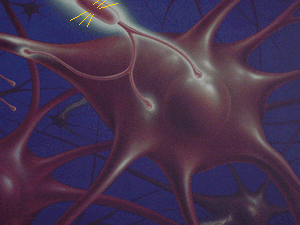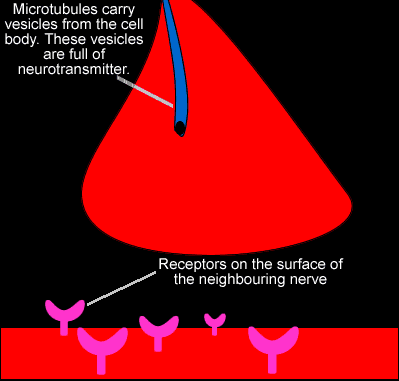

There are many neurotransmitters active in the brain. Each neuron uses only one or two of the main neurotransmitters.
Once the neurotransmitter
is released into the synapse and activates the signal, it is either
reabsorbed into the nerve cell or destroyed by special chemicals. If
the neurotransmitter is allowed to persist in the synapse, constant
excitation of the nerve takes place. Consider the video on the right.
1) A signal travelling down a nerve is called an
2) One nerve communicates with another nerve
3) When an action potential reaches the pre synaptic membrane vesicles containing fuse with the membrane and empty their contents into the
4) Receptors are
5) What binds together in a lock and key type fit?
6) What happens to the neurotransmitter once it is released into the synapse?
7) What triggers an action potential in the postsynaptic neuron?